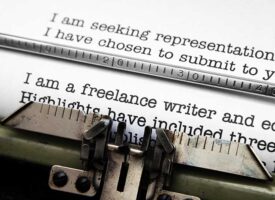1. Hemingway’s Rules
When Ernest Hemingway was a cadet journalist at the Kansas
City Star he was given a style guide that included four basic rules he committed to
memory. Apparently they served him well for the rest of his life. They are:
• Use short sentences
• Use short first paragraphs
• Use vigorous English
• Be positive, not negative
Valid points all.
2. The Lead
The first sentence or two of the opening paragraph or a stand-alone
introduction, the lead is the most important part of the story. It needs to grab the reader’s
interest and persuade them to read on. If you’ve come this far, it means my lead worked
and you wanted to keep reading. Thanks for sticking around.
3. Get to the Heart of the Story
You’ve written the lead and a great first paragraph,
now what? Time to write the story. Now is not the time to bore readers – when is – so get
to the heart of the matter and the best way is by using structure. And the best way of
doing that is by . . .
4. Who, What, Where, Why, When and How
Who are you writing about, what
happened, where is it, why did it happen, when was it, how was it resolved? These are all
important questions that your reader will want answers to. Having this simple structure is
a great way of avoiding writer’s block and it helps with the next point.
5. Flow
Articles that move seamlessly from one logical point to another are easy to
read and will hold the reader’s interest. Keep it flowing and keep the reader.
6. Show Don’t Tell
There is no better way of involving the reader than by using
quotes. Quotes give the piece authority and authenticity and stop the piece from being a
lecture. People want to be informed and the best way is through quotes. They are also
great for leads and endings.
7. Style
Style comes with experience, so keep writing and your’s will develop.
Don’t try too hard because it will sound forced; don’t try to be fancy or sound incredibly
well-educated with the hope people will look up to you; they’ll see it from a different
perspective: you looking down on them.
8. Keep it Tight
If a word or sentence isn’t contributing, get rid of it. Can you say in
one sentence what you’ve just said in two? That paragraph that doesn’t seem to be
working or fitting in obviously doesn’t – cut it. Write in the ‘active’ voice. Or, you may
find that you like writing in the ‘passive’ voice, as it is more suited to you and your style
and what it is that you are writing about. Nah, write in the active voice.
9. The Ending
If your article is coming to a close, end it, don’t try and push on.
There’s usually a point where all is said and done and it’s time to leave. Find a good
quote that ties it all together or draw a conclusion from what you’ve already said.
10. Edit
Edit, edit and then edit it again. It’s amazing what you find the second time
around. Read aloud what you’ve written and see how it ‘sounds’. If it sounds right, it is.
A good trick is to have a short break at the completion of the first draft and then go back
and clean up the obvious problems. Then, if possible, leave it for a day or two and go
over it with fresh eyes and do your final draft.
You may find initially that your changes are many. With time, you’ll be getting
closer to the mark with your first draft but remember, a piece will always benefit from
editing. On saying that, don’t fall into the editing trap. At some stage you’ve got to
submit it. Three drafts are usually plenty.
Important point
Editing as you go stops the flow. Keep writing and ignore the
underlines on misspelt words and grammatically incorrect sentences. Turn those features
off in your preferences if you can, at least while you’re writing your first draft. Keep
writing and worry about polishing later. Or, alternatively, write the first draft on a
typewriter. A typewriter is a very beneficial tool as it makes you think before you write
and you can’t edit as you go.
Here are a few more quick points:
• Use strong verbs instead of adjectives and adverbs
• Use familiar words; don’t alienate your readers
• Say it in as few words as possible
• Avoid jargon, cliches, fad words and commonplace sayings
ABOUT THE AUTHOR
Matthew Smeal is a freelance writer and photographer from Sydney, Australia. Feel
free to contact him and view his work at www.matthewsmeal.com



